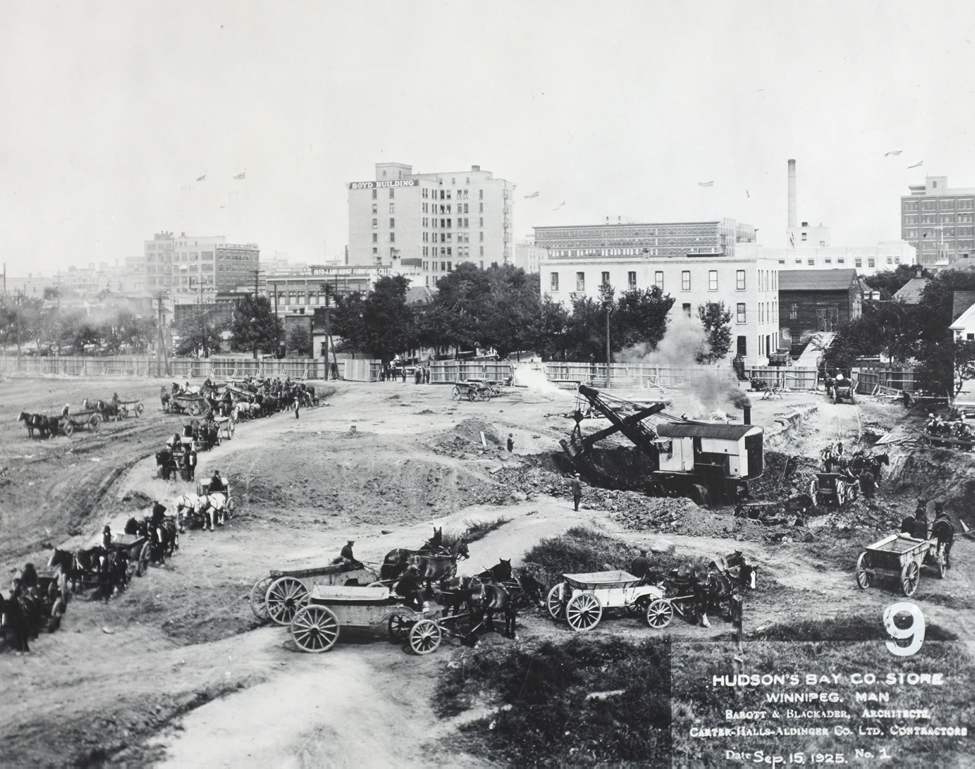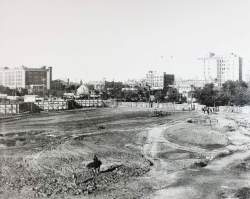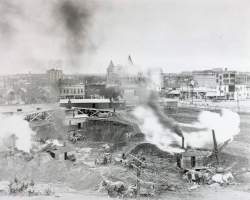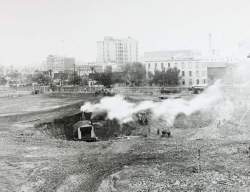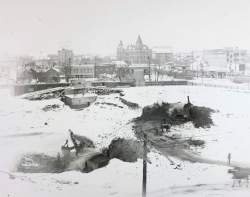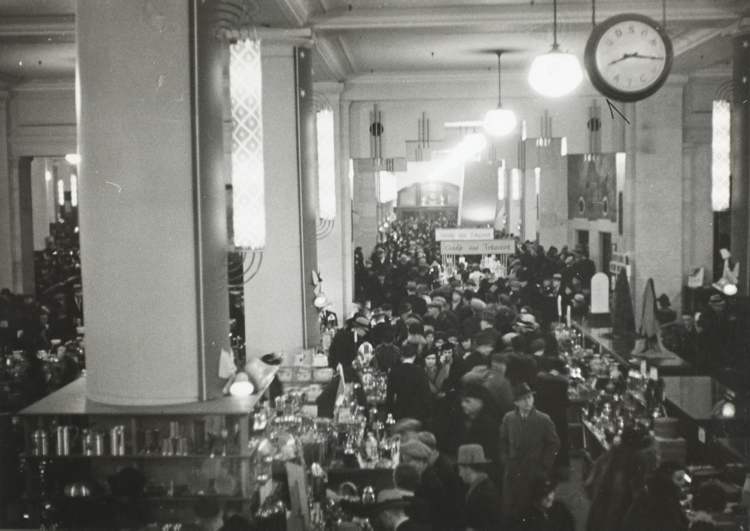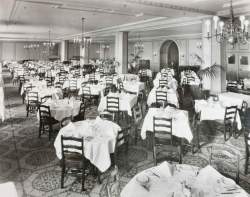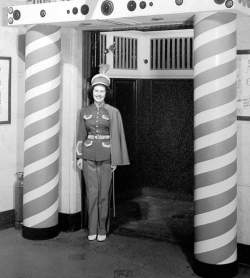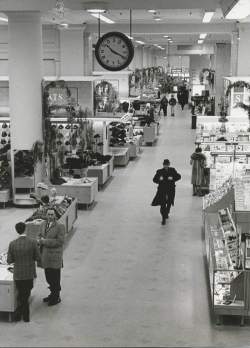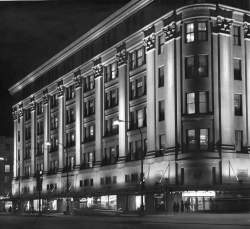New life for old Bay ‘Tangible action’: Southern Chiefs’ Organization to transform downtown icon into affordable housing, daycare, museum
Read this article for free:
or
Already have an account? Log in here »
To continue reading, please subscribe:
Monthly Digital Subscription
$0 for the first 4 weeks*
- Enjoy unlimited reading on winnipegfreepress.com
- Read the E-Edition, our digital replica newspaper
- Access News Break, our award-winning app
- Play interactive puzzles
*No charge for 4 weeks then price increases to the regular rate of $19.00 plus GST every four weeks. Offer available to new and qualified returning subscribers only. Cancel any time.
Monthly Digital Subscription
$4.75/week*
- Enjoy unlimited reading on winnipegfreepress.com
- Read the E-Edition, our digital replica newspaper
- Access News Break, our award-winning app
- Play interactive puzzles
*Billed as $19 plus GST every four weeks. Cancel any time.
To continue reading, please subscribe:
Add Free Press access to your Brandon Sun subscription for only an additional
$1 for the first 4 weeks*
*Your next subscription payment will increase by $1.00 and you will be charged $16.99 plus GST for four weeks. After four weeks, your payment will increase to $23.99 plus GST every four weeks.
Read unlimited articles for free today:
or
Already have an account? Log in here »
Hey there, time traveller!
This article was published 21/04/2022 (1333 days ago), so information in it may no longer be current.
In a major change for downtown Winnipeg, Hudson’s Bay Co. has gifted its former flagship store to First Nations leaders who will transform it into affordable housing, a daycare, museum and convening space for Indigenous people.
A two-hour event marked by ceremony Friday morning saw the SCO take control of the vacant six-storey building, which opened in 1926 and closed in November 2020.
Prime Minister Justin Trudeau announced $65 million towards the SCO’s transformation of the building into a multi-use centre for Indigenous housing, healing and governing. Premier Heather Stefanson pledged $35 million from the province — $10 million for the housing component and $25 million for historic preservation of the century-old building.
“It’s a real, tangible action of what reconciliation means in this country, and of where we’re at in this moment in our history,” Grand Chief Jerry Daniels told the Free Press. SCO represents 34 First Nations in southern Manitoba.
The renewed building at 450 Portage Ave. will have nearly 300 affordable-housing units, including 75 for elders in assisted living.
It will include a museum and “living art gallery,” a daycare where children learn Indigenous languages, a health and healing centre that offers both both western and traditional medicine, and a rooftop garden.
“It’s a place where Indigenous Peoples can feel that they are supported; that we are here advocating for them.”
– Southern Chiefs’ Organization Grand Chief Jerry Daniels
The 655,000-square-foot building is to include space to commemorate children who died at residential schools and those who survived both residential and day schools.
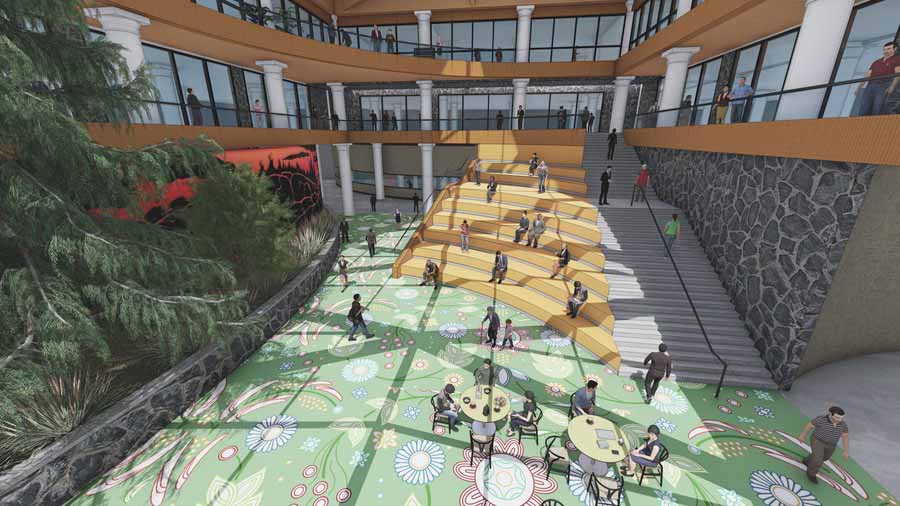
Daniels said there will also be a governance house in the building for southern chiefs to meet, putting them steps away from the Manitoba legislature.
“It’s a place where Indigenous Peoples can feel that they are supported; that we are here advocating for them.”
That means jobs, services and a space for ceremony for urban Indigenous people, he said, noting Winnipeg has the largest Indigenous population of any Canadian city.

“I know many of them are struggling, but we’re going to create opportunity here,” Daniels said. “We’re going to try to drive up the highest impact that we can to change the current scenario, and close the gap as it relates to Indigenous people.”
Hudson’s Bay Co. governor Richard Baker said the company is trying to do its part for reconciliation, recognizing its 350-year relationship with Indigenous Peoples.
“It’s going to be a reinvention,” he said. “This building is going to be a totally different thing.”
HBC relied heavily on the First Nations as it shaped communities across what is now Canada (in ways that have earned both praise and scorn).
“Who better than the Hudson Bay Co. to work with the Indigenous Peoples and the Southern Chiefs’ Organization, and be supportive, involved and committed to reconciliation?” Baker said. “We’re thrilled and proud to be leaders in that area.”
The project’s working title is Wehwehneh Bahgahkinahgohn, which is Ojibwa for “it is visible.” The project team includes former national chief Phil Fontaine, who was instrumental in starting a national reckoning over residential schools, and former federal cabinet minister Lloyd Axworthy.
Daniels said the building aims to demonstrate the values of treaties Indigenous people signed with the Crown, of making mutually beneficial changes and living in a sustainable way.
To that end, the project aims to help revitalize downtown Winnipeg after a COVID-19 pandemic slump, and a series of retrofits aim to cut the building’s greenhouse gas emissions by 81 per cent.
“We really want to reshape the perspective and understanding of Indigenous Peoples. That we are here to be vibrant members of society, and we are going to continue to be resilient in our efforts to create opportunity for our young people,” Daniels said.

The Beaux-Arts style building’s official heritage status (granted in 2019) protects its exterior limestone walls, outside canopy, and inner curved elevator lobby. Daniels said SCO plans to retain the building’s look and signage, perhaps with some First Nations flags.
The first floor will be a public space that shows an Indigenous worldview, honouring lands and waters, with an atrium illuminated by skylights.
Winnipeggers’ beloved Paddlewheel Restaurant (shuttered in 2013) is to reopen, and they’ll have a second option with a café featuring First Nations cuisine.
“I think (the project) going to be very significant, not just for our province, but for our country,” Stefanson said Thursday.
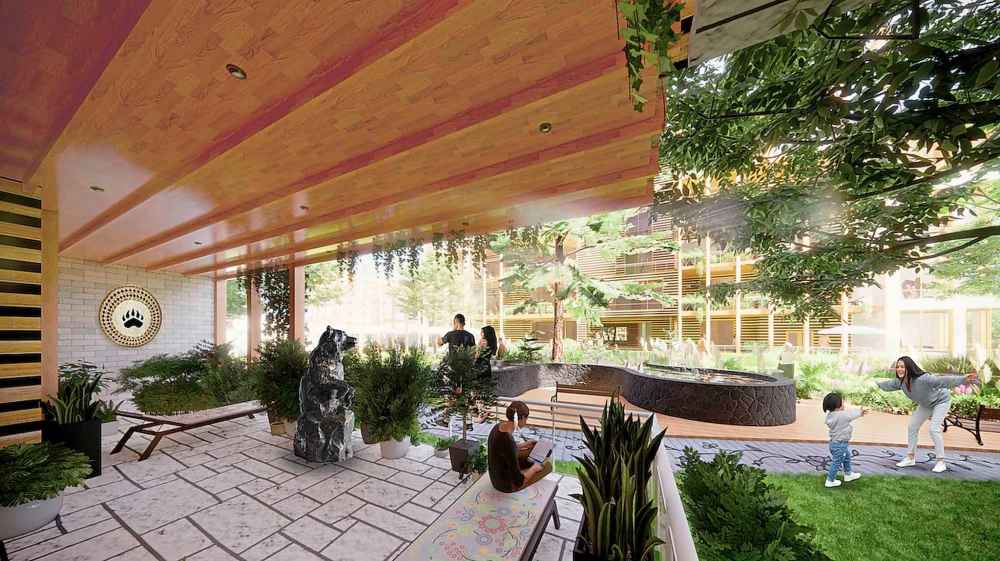
Coun. Sherri Rollins, a member of city hall’s Bay downtown advisory committee, said the plan also achieves the goals of maintaining heritage status and keeping Portage Avenue and Memorial Boulevard as an “iconic corner.”
“I will be welcoming with open arms all the new residents to the downtown this is going to bring,” said Rollins. “I know Winnipeggers have been looking for this announcement, and looking for visible signs of recovery.”
Heritage Winnipeg executive director Cindy Tugwell called it a major redevelopment that will contribute in a “positive way” and focus on reconciliation.
“I’m very excited because this is a new opportunity to create history again,” she said.
Mayor Brian Bowman was not available for comment, his spokesman said.
The downtown landmark was the first headquarters for Hudson Bay Co. when it moved to Canada from London, and it was in the middle of the action when Winnipeg was one of the most bustling cities in the British Empire.
However, in 2019, an appraisal by real estate firm Cushman & Wakefield found the building had a market value of $0, and it could cost up to $111 million to bring it up to code.
HBC had been subletting space, and had offered the building as a gift to the University of Winnipeg, which declined in 2012 (when Axworthy was its president).
Jino Distasio, a professor of urban geography at the U of W, said officials will have to overcome several challenges to modernize the site while preserving decades-old features.
Innovative plans are needed to bring natural light into housing units, said Distasio, who hopes to see “boldness” in the design and alterations of the building. “A multitude of uses is the most likely way they will see some positive outcomes from the project.”
Baker said he was intrigued by the project Daniels had laid out in phone calls, which culminated in a meeting in New York a year ago. He found “their passion to do something great” inspiring.
“Over the years, I’ve had half-a-dozen proposals for people to buy the building (and) redevelop it,” Baker said. “This was certainly the most visionary proposal we had gotten, and it just felt right.”
— with files from Chris Kitching and Carol Sanders
dylan.robertson@freepress.mb.ca
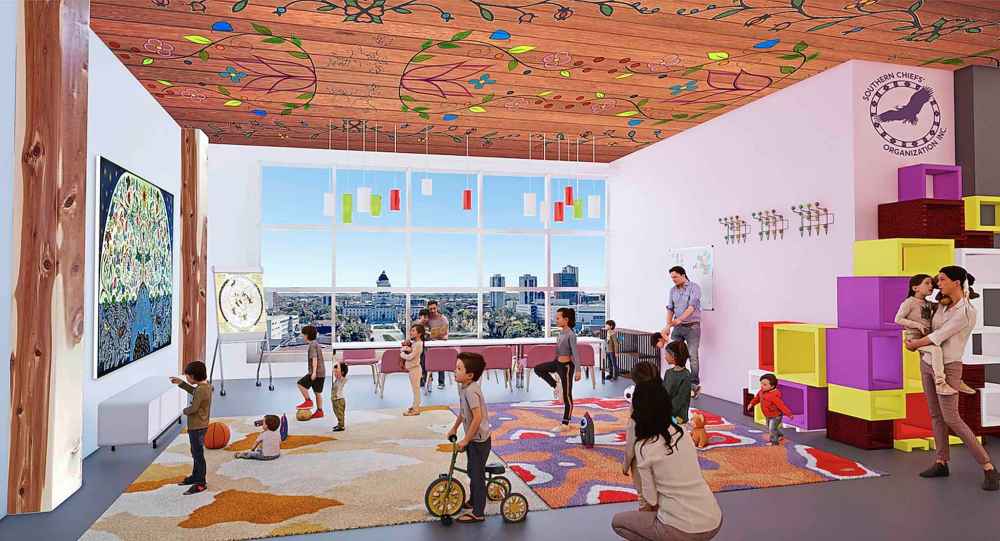
History
Updated on Thursday, April 21, 2022 10:20 PM CDT: Adds pullquotes
Updated on Friday, April 22, 2022 9:44 AM CDT: Adds photos
Updated on Friday, April 22, 2022 9:46 AM CDT: Adds photo, converts story to jumbo format
Updated on Friday, April 22, 2022 11:50 AM CDT: Adds artist's rendering of design
Updated on Friday, April 22, 2022 12:10 PM CDT: Adds funding details.
Updated on Friday, April 22, 2022 12:51 PM CDT: Adds artist's rendering of design
Updated on Friday, April 22, 2022 2:15 PM CDT: Photo of ceremony added.

